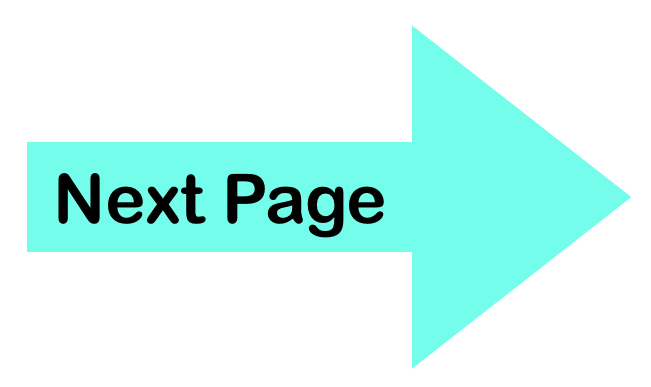Welcome! This may be your very first page on your road to learning Hiragana!
There are 46 basic Hiragana characters. 6 of them can be represented by a single English letter; 2 of them by three letters. The remaining 38 are all represented by two characters. Let’s get into them!
Romaji
First let’s talk about Romaji. You may have heard that Japanese has 3 sets of characters to express the language – Hiragana, Katakana, and Kanji. While that is true, there is a fourth set of characters and that is Romaji!
If you see the word “sake” you automatically read it as a word that rhymes with “take” and means “for the benefit of someone or something”. However, this is the English reading of the word. If you look at that word as Romaji, it is pronounced as “sah-keh” and it means Japanese alcohol.
Romaji is not English. It is an attempt at writing Japanese words with the English alphabet. There are sounds in each language that are not in the other, so relying on Romaji for too long is not a good idea. It is really only useful when you are beginning to learn Hiragana (and maybe 1 or 2 instances after that)
Ok, with that out of the way, let’s take a look at the basic 46 hiragana characters.
Order
Just like how we have something called “alphabetical order”, there is also an order to Hiragana (and katakana as well). To remember the order, there are several mnemonics that people use. The one I’ve always used is:
Kana Signs, Think Now How Many You Really Want
Each of the beginning letters
The Vowel Group (あいうえお)
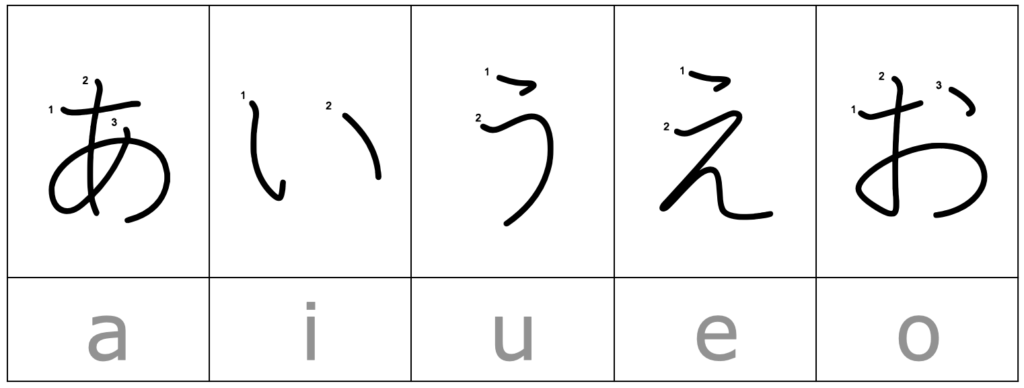
These 5 characters are the vowels of Japanese. While English (depending on where you are from) can have anywhere from 24 to 27 different vowel sounds, GOOD NEWS: Japanese only has these 5!
The K Sound Group (かきくけこ)
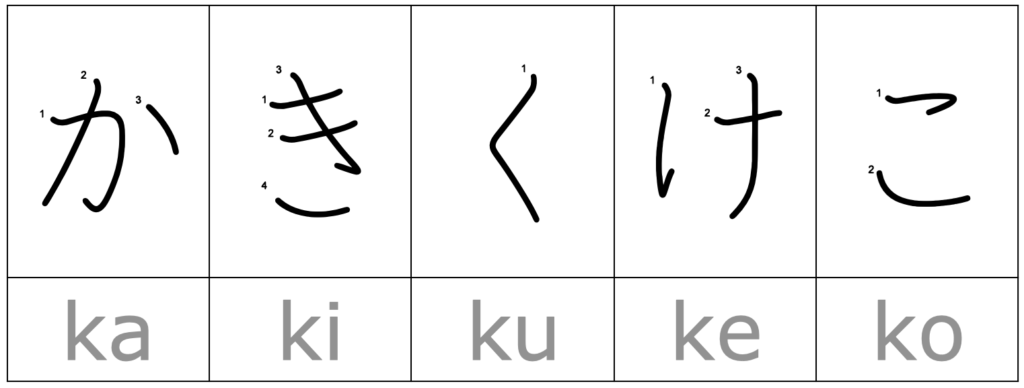
At this point we need to be aware of a big difference between Japanese and English. If I asked you to break down the sounds of the word “kid”, you would tell me the 3 individual sounds for each letter. But in Japanese, the k and i sounds MUST go together. The majority of Japanese hiragana characters are made up of a consonant-vowel pair.
This is why our hiragana characters in Group 2 (and beyond) need either two or three English letters. Group 2 is simply made up of the 5 vowel sounds added to the consonant “k” sound.
The S Sound Group (さしすせそ)
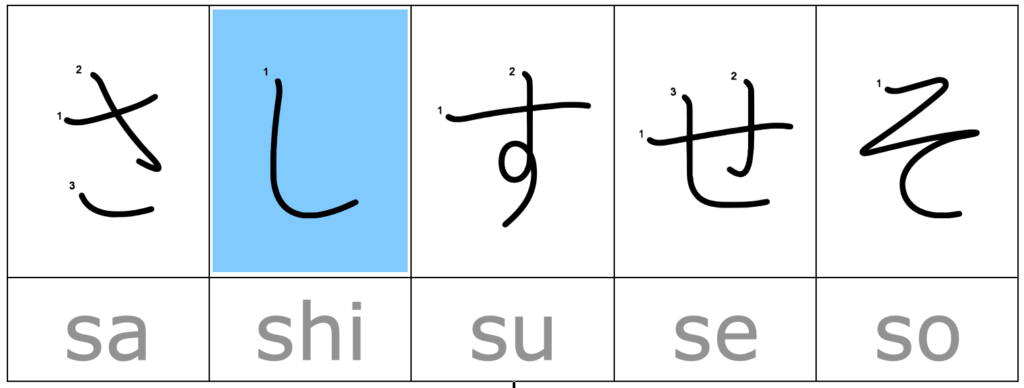
Group 3 is made up of the 5 vowels added to the consonant “s” sound. However, in this group we have our first irregular character!
According to the pattern so far, you would think that the し character would be pronounced “si”, as in the Spanish word for “yes”. In actuality, it’s pronounced “shi” as in the English word “she”. This is something to take a mental note of.
The T Sound Group (たちつてと)
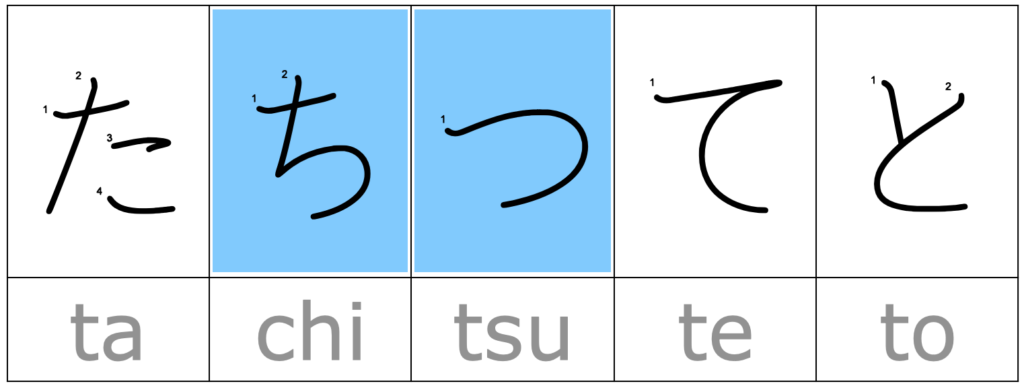
The next group is mostly made up of the 5 vowel sounds added to the consonant “t” sound. This time, we have two irregular characters! Instead of sounding like the English word “tea”, the character ち sounds like the second syllable of the English word “catchy”.
Unfortunately, the character つ doesn’t have any equivalent sound in English. Instead of sounding like the Spanish word for you (tu), the closest we can get is trying to make the “t” sound while saying the name “Sue”! This character took me a bit of practice to master.
The N Sound Group (なにぬねの)
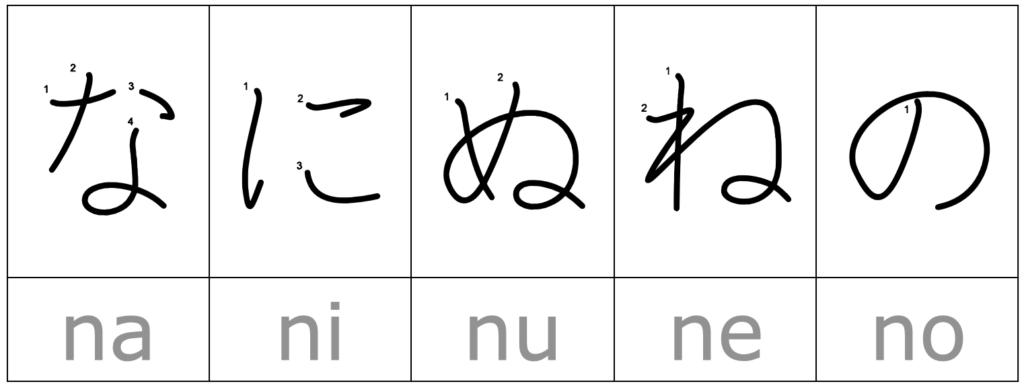
Good news: Group 5 doesn’t have any irregular characters, so it is pretty straightforward!
The H Sound Group (はひふへほ)
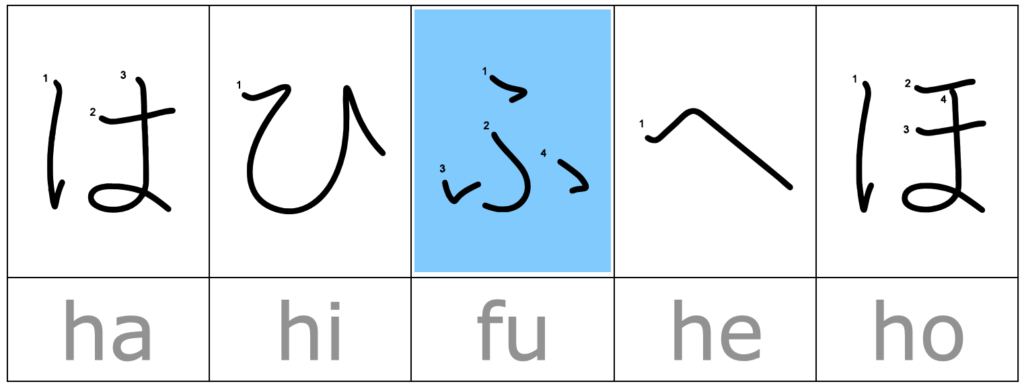
Group 6 has one irregular character. You might be tempted to think that ふ is pronounced as “hu”. If you look at the English representation, you might think that it’s pronounced as the first part of the word “fool”. In actuality it is pronounced somewhere in between! Just like つ, this character took me some time to get right.
The M Sound Group (まみむめも)
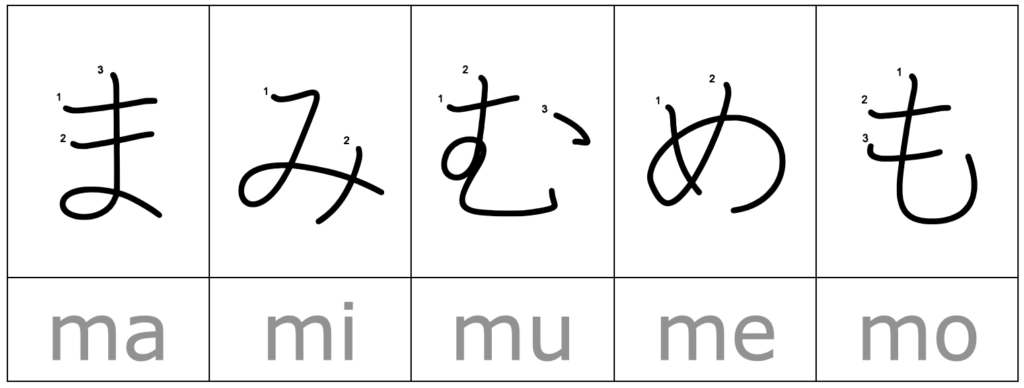
As Group 7 is just the 5 vowel sounds added to the consonant “m” sound, this group is also pretty straightforward.
The Y Sound Group (やゆよ)
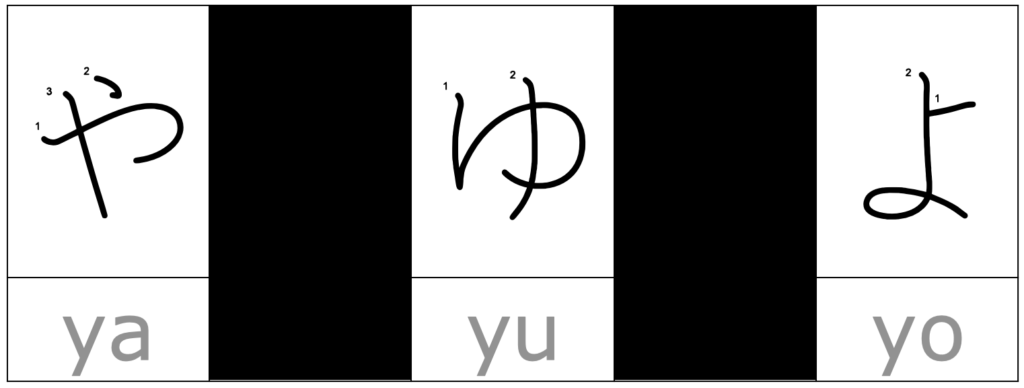
You’ll notice that Group 8 only has three characters. There used to be characters for the sounds “yi” and “ye” but they dropped out of modern use.
Also, these 3 characters are very important for making another set of sounds in Japanese. More on that here.
The R Sound Group (らりるれろ)
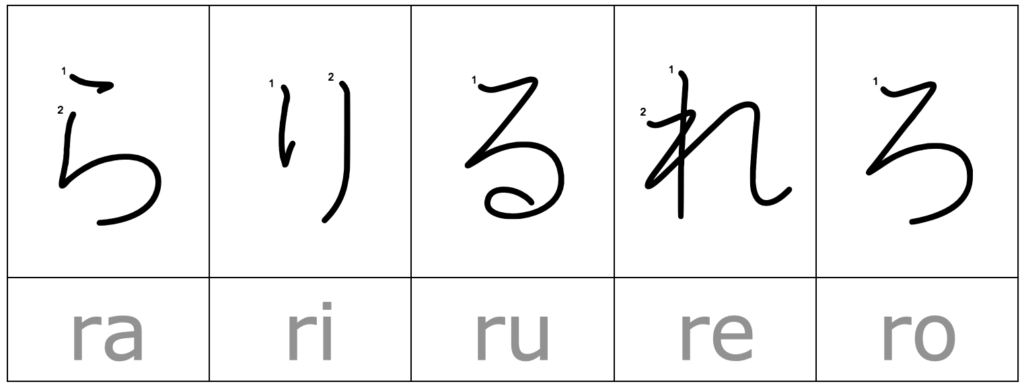
Group 9 appears to be simply the 5 vowel sounds added to the consonant “r” sound, however it isn’t that simple.
As you may or may not know, Japanese people have a very hard time pronouncing and differentiating between the English “r” and “l” sound. The reason is that they don’t have those sounds in Japanese. Unfortunately that also means that these 5 characters are not easy for native English speakers to pronounce. Each character’s pronunciation is actually somewhere between an “r” and an “l” sound. These characters took me the longest time to master (especially in long words!)
The W Sound Group (わを)
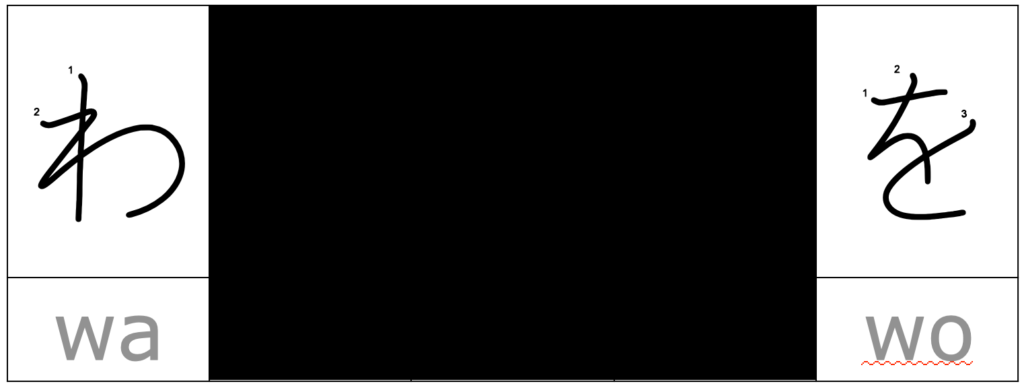
Group 10 has only 2 characters. The only thing of note here is that を sounds almost identical to the character お. を is only used as a particle, so it will never appear in the middle of a word. Also, when it’s used as a particle, you might be able to hear a slight pause after it. These kinds of tricks make it easy to figure out when you are hearing を and when you are hearing お.
ん

The last basic character is ん. This is actually the only character that can be represented by a single consonant. It is mostly easy to tell when you are hearing this character, but there are times when its pronunciation changes. More on that later.
Conclusion
So there you have it! Some people say that you can learn all 46 characters in 2 days, others say it should only take a week. It took me longer than that and so I say, take your time! There is no race to learn them so go at your own pace. I have some games that will help you study. Make sure that you have a good time while you practice, and you’ll be more likely to remember. Hiragana are important for learning Kanji down the line so it’s best to do it right the first time.


